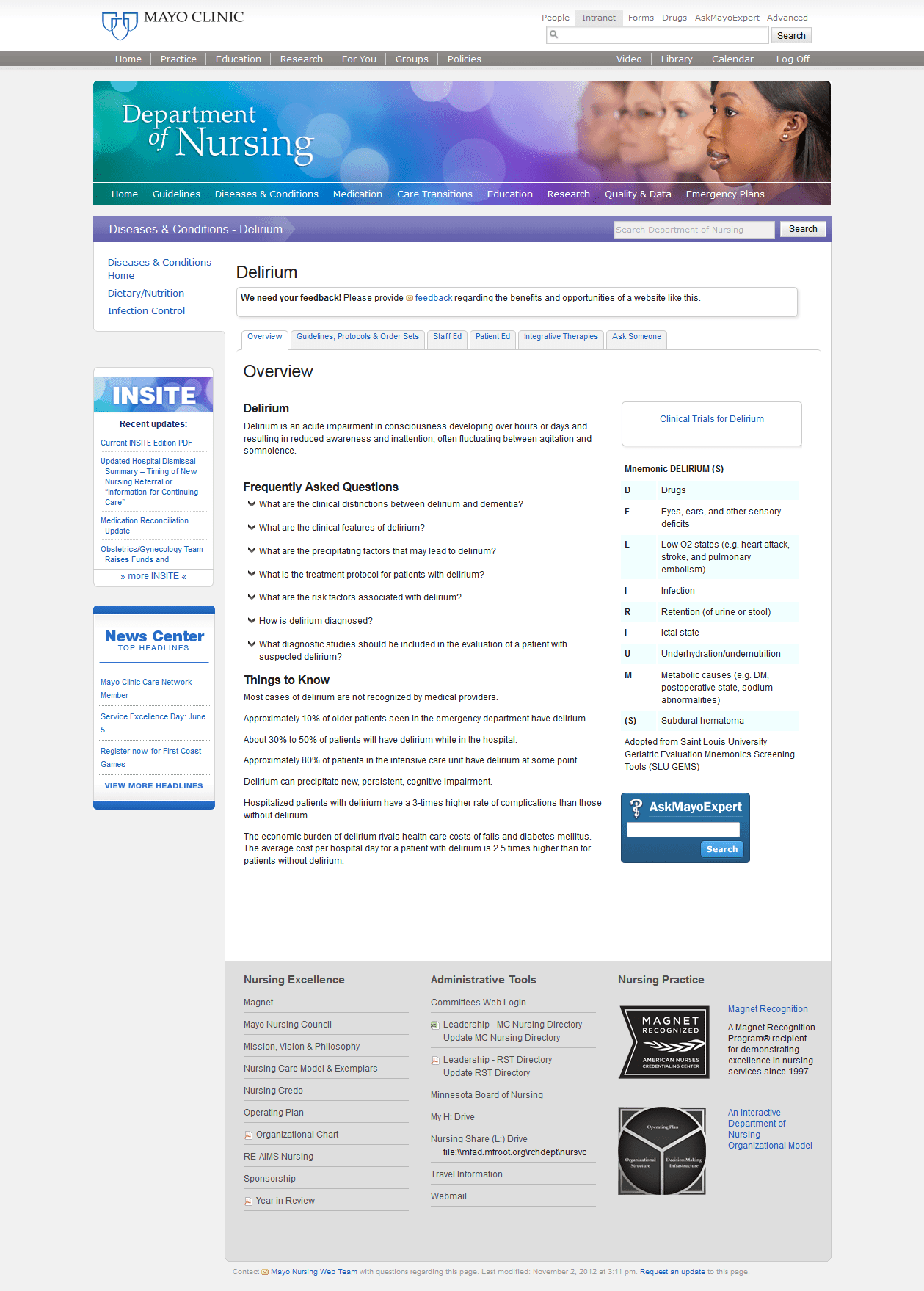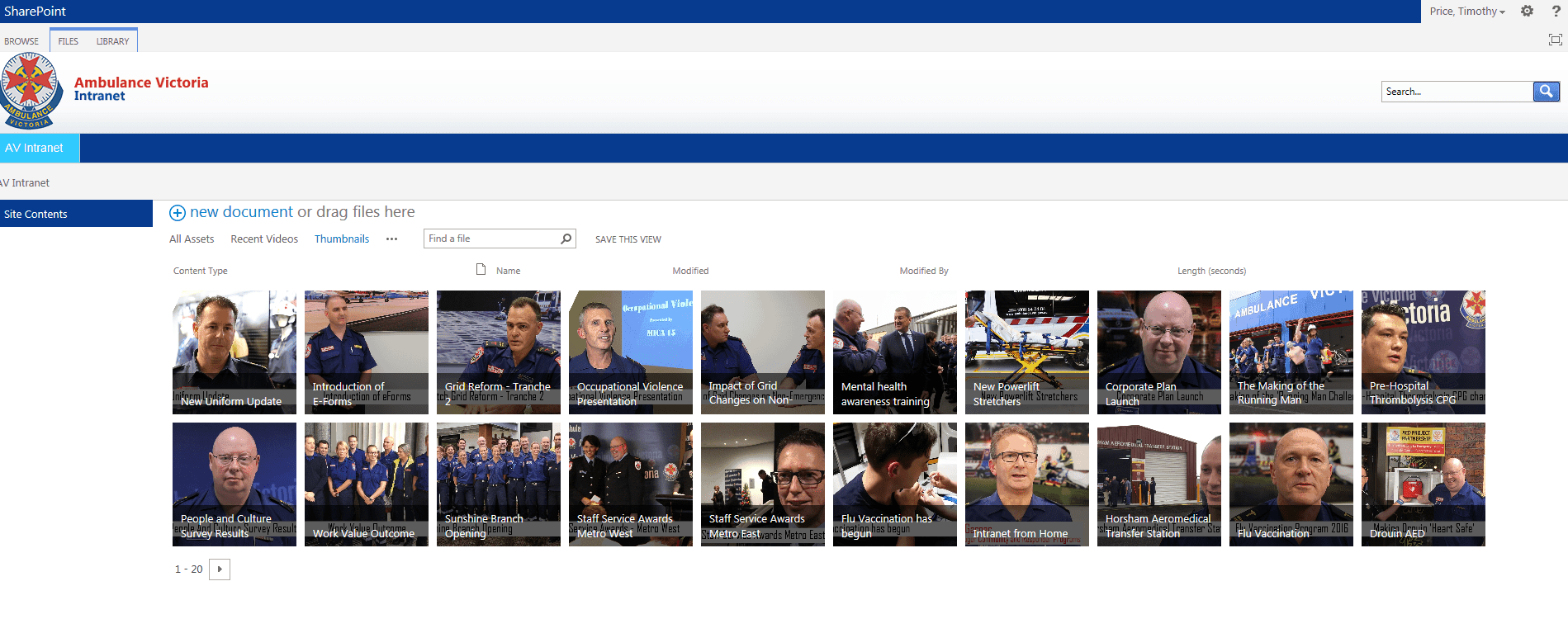
Filed under: Digital workplace, Intranets, Latest Features
It can be challenging delivering effective digital workplaces and intranets to hospitals and related healthcare organisations, but at the same time it can be extremely rewarding when they have a positive impact. Hospitals are complex and have:
- highly diverse workforces with particular, focused needs
- a large proportion of mobile frontline workers
- content that must be accurate
- extremely time-pressured environments
- diverse digital workplace landscapes consisting of corporate, clinical and frontline systems and content
- and resourcing constraints.
Any one of those can cause an intranet or digital workplace team issues, but in hospital environments they tend to all be present. However, successful intranets and digital workplaces are can make a real difference to hospital staff and patients – making a demanding working day just a little less demanding and even positively impacting patient care.
Step Two has been working with hospitals for over fifteen years. In fact our first ever project was in a hospital! During that time we’ve helped a range of clients across the sector. Here are some observations about the approaches intranet and digital workplace teams in hospitals and healthcare organisations have adopted to help deliver successful intranets and digital workplaces.
Having an intranet focused on getting things done
In a great blog post from Jesper Bylund, an intranet manager currently developing a healthcare intranet for Region Skåne in Sweden, Jesper amusingly quotes his wife who is a paediatric nurse at Region Skåne, and therefore a user:
“My work day is about saving small children’s lives. Therefore I need to see the essential things right away. Your new intranet must help me with this. If you put any executive “blah, blah, blah” in the way I will kill you.”
This perfectly sums up the attitude of clinical staff who’s priority is to care for their patients. They want an intranet which helps to complete tasks and processes, get things done and find the items they need. It might also be the gateway to the wider digital workplace. Of course employee engagement and internal communications are very important, but they will not be the main reason hospital staff visit an intranet. The primary focus of a hospital or healthcare intranet must be supporting everyday work rather than just corporate goals.

The homepage of the intranet of the Children’s Hospital of Philadelphia (CHOP) which focuses on helping busy staff get things done. Screenshot appears courtesy of CHOP.
For example the Children’s Hospital of Philadelphia (CHOP) intranet helps 14,000 staff with their everyday work. The homepage allows users to add bookmarks to content and to key applications, while “For your action” and “For your information” areas highlight essential information which either must or should be read.
Meanwhile a Knowledge Base area provides a “one-source-of-truth” repository for controlled items, including various departmental policies and procedures. A tools and apps section also provides access to all tools, applications and forms used throughout the hospital. Search on the intranet has also been improved considerably.
Ensuring strong findability for healthcare-related content
Frontline clinical staff in hospitals such as nursing staff have every demanding and time-pressured roles. Therefore when staff are looking up critical healthcare information and reference content to support their frontline duties, it is absolutely essential that they can find what they need quickly. Timed wasted on unsuccessful searching or browsing on the intranet may be time not spent on patient care.
User-centered navigation and tagging of content for searching must be carefully considered and managed so staff can find what they need easily and quickly. This means involving subject matter experts, spending time on testing navigation or search, and working on a basis of continual improvement.

The Patient Care area of Flo, the intranet for Kent Community Health NHS Trust, supports District Nurses out in the field. Screenshot appears courtesy of Kent Community Health NHS Trust.
For example, Kent Community Health NHS Trust in the UK manages several community hospitals providing a range of patient services. This includes staff who are out in the community. The Trust’s intranet, called Flo, includes a patient care area which is carefully organised by topics and issues which are commonly mentioned by patients. This content has helped District Nurses to identify common conditions on their first visit to a patient, rather than having to book a second appointment or make a referral. This is both improving patient care and helping save valuable time.
Carry out extensive user research

The Mayo Clinic’s Department of Nursing intranet has critical frontline content for nursing staff which has been produced after intensive user research. Screenshot appears courtesy of Mayo Clinic
One of the ways to ensure that content meets staff needs is to carry out extensive user research to get a full understanding of needs, pain points and ways of working.
At the Mayo Clinic the Department of Nursing produced an intranet with content specifically designed to support 8,000 nurses deliver patient care. With different topic pages on medical issues and resource pages specifically aimed at different nursing roles, the content and information architecture has been written so nursing staff can find and digest the information they need quickly. On average this has reduced the amount of time spent finding patient care information from fifteen to three minutes.
This work has been produced on the back of an exceptionally detailed approach to user research involving a huge content audit, workplace observation, the use of role-based personas, special focus groups, and usability testing. Only having a very detailed understanding of user needs could produce an intranet that can serve the complex needs of different nurses and therefore improve patient care.
Work on improving processes that will increase productivity
A digital workplace must not only support staff in their everyday work but should also improve processes, save time and increase productivity. Within hospitals and in the general field of patient care there is a strong emphasis on processes and procedures with, therefore, multiple opportunities for a good digital workplace to make tangible improvements.
At Henry County Health Center, a small US-based hospital, the intranet team customised its off-the-shelf intranet to produce an application called the “Census Board” which displays data about the status of each bed at the hospital including whether it is occupied and its state of cleanliness. One of the key innovations is to allow housekeeping staff to log cleaning updates on the tablets which are mounted on their cleaning trolleys. Other information such as occupancy rates comes from key systems such as the hospital’s electronic medical research systems.
This innovation has delivered a number of operational improvements at very little cost. These include establishing “one source of truth” in real-time about room status for all staff, improved reporting for Environmental Services, improved data accuracy, more efficient room assignment, greater transparency and more.

The Census Board at Henry County Health Center shows the cleaning status of patient’s rooms. Screenshot appears courtesy of Henry County Health Center.
Provide a strong mobile experience
Hospital and healthcare staff tend to be highly mobile and are rarely stationed at a fixed terminal. Some staff also work out in the field. Allowing staff to access the hospital intranet and other channels within the digital workplace from mobile devices and with an optimised experience, ensures the hospital digital workplace can directly support staff’s daily work.
For example, at the Children’s Hospital of Philadelphia (CHOP), the intranet uses responsive design to deliver a good experience on mobile devices.

The intranet at the Children’s Hospital of Philadelphia (CHOP) is responsive and optimised for mobile devices. Screenshot appears courtesy of CHOP.
Being creative with the digital workplace
Hospitals and healthcare providers are complicated. Sometimes when hospitals and related services are publicly funded they also have challenges around resourcing and budgeting. Managing an effective digital workplace requires imagination, innovation and even a little experimentation.

The intranet-based video library at Ambulance Victoria. Screenshot appears courtesy of Ambulance Victoria.
For example, at Ambulance Victoria the intranet team were able to hugely extend the use of video across the organisation by training the media team to film videos using iPhones and then edit them down. A part time video editor also allowed the team to produce 90 videos in 15 months, receiving over 50,000 views from staff and allowing for far more effective and impactful internal communications. This creative approach allowed the team to circumvent resourcing challenges and ensure video was a key medium within Ambulance Victoria’s intranet and digital workplace.
Navigating the challenges
If you manage the intranet or digital workplace in a hospital or related healthcare organisation have you followed a similar path to any of the above? Or have you done something different? We’d love to hear about the successful approaches you’ve adopted to deliver a great hospital intranet. Alternatively, if you’re struggling and want to have a chat then please don’t hesitate to get in touch. Either way, we’d love to hear from you!





